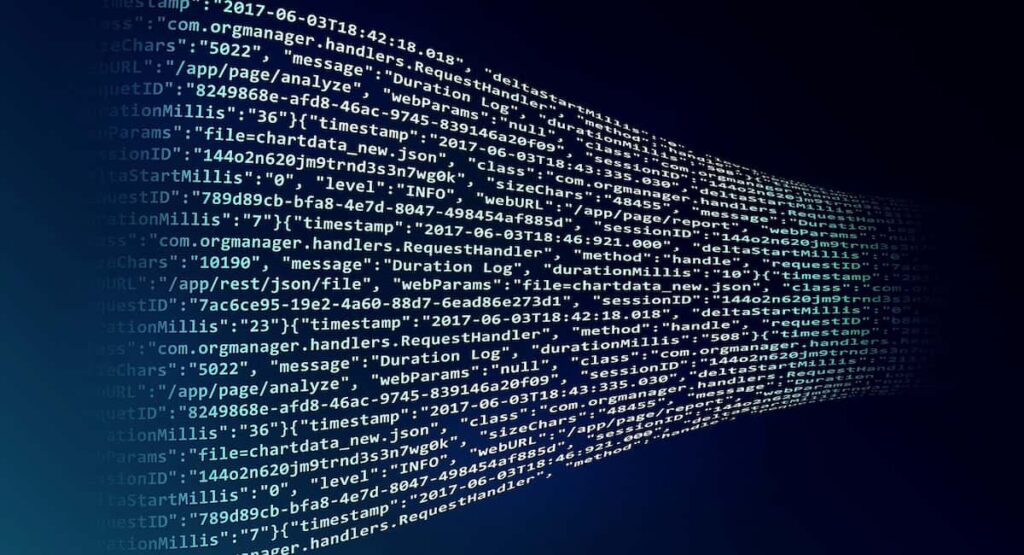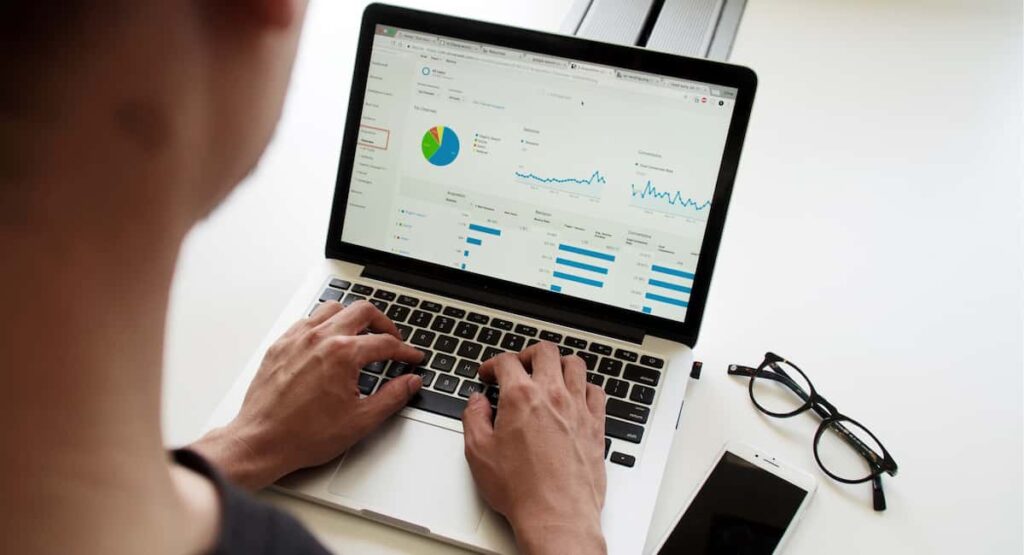In recent years, we’ve been hearing a lot about “Big Data” — how important it is, its role in the future, how it’s being used, and how we should be cautious about using it? But what is big data, exactly?
Big Data: A Definition
 By definition, big data can mean one of two closely related things:
By definition, big data can mean one of two closely related things:
- Extremely large data sets, possibly as large as one million gigabytes, are collected through a variety of means.
- The proliferation and availability of that data in the world; i.e. how much data is being collected by smartphones, social media posts, wearable health tech, and thousands of other sources.
Big data is typically characterized by what is known in the industry as the “5 V’s:”
Volume. This is the “big” part of big data. Big data is truly enormous — in 2016, mobile traffic alone counted for 6.2 exabytes of data. That’s 6.2 billion gigabytes. By 2025, it’s estimated that global data will be in the zetabytes (that’s a number with twenty-one zeroes behind it), a truly staggering amount of data.
Velocity. This refers to the accumulation of data and the speed at which it is collected. Every day, massive volumes of data are collected from computer networks, smartphones, social media, point-of-sale systems, and much more. Google alone receives 3.5 billion searches per day, and daily email exchanges are in the hundreds of millions. Velocity is the constant and rapid flow and collection of data.
Variety. Not all big data is created equal. Not only does data come in from a variety of sources (as seen above), it also gets collected in a variety of forms:
- Structured data, which is organized and has a defined length and format and can be organized into rows and columns, such as with a relational database. This might include things like contact information and surveys.
- Semi-structured data, which may be partially organized but does not always have a formal structure.
- Unstructured data, which has no defined structure, such as text, photos, videos, and anything else that can’t be put into a typical database format.
Veracity. One of the things about big data is how difficult it can be to verify and analyze. The different data types and sources that make up big data can make accuracy and quality control a difficult proposition at best. Organizations have to be able to trust in the accuracy of their data.
Value. This is the final, but most important, aspect of big data. Data by itself has no real value or merit on its own. It needs to be analyzed, understood, and put to use before it has any value. Data that can’t be parsed or understood in any way is just noise.
Big data as a blanket term can also refer to how that data is dealt with — for example, the collection and warehousing of data, analysis by data scientists, artificial intelligence, and machine learning, how and why the data is collected, and so on.
What A Data Scientist Does
 As said above, data has no intrinsic value until actionable insights can be gained from it. That’s where data scientists come in. A data scientist’s job is to analyze data and shape it into understandable and informative results.
As said above, data has no intrinsic value until actionable insights can be gained from it. That’s where data scientists come in. A data scientist’s job is to analyze data and shape it into understandable and informative results.
Becoming a data scientist requires at least a bachelor’s degree in data science, and their skills tend to be in very high demand — data scientists are the second most in-demand job in America and will continue to grow as the world becomes more and more reliant on the benefits of big data.
Data scientists work for government agencies, tech firms, nonprofits, insurance agencies, financial companies, and any other organizations that benefit from large volumes of data.
Data scientists also have a wide variety of roles, including:
- Data architects, who help formalize and organize data sets into comprehensible form;
- Data engineers, who organize the collection, processing, and storage of data;
- Statisticians, who apply statistical methods to data in order to analyze and interpret it meaningfully;
- AI specialists, who help create AI software that can collect and organize big data, such as chatbots, voice and face recognition software, and language processing.
- Machine learning specialists, who develop new algorithms and AI solutions that can help software learn how to organize, analyze, and interpret data itself, instead of relying solely on human analysis.
How Businesses Use Data
 Once data scientists have gleaned insights from the data collected, businesses can put the results to use in a variety of ways, such as:
Once data scientists have gleaned insights from the data collected, businesses can put the results to use in a variety of ways, such as:
- Improving customer relationship management
- Better targeting of marketing and advertising campaigns
- Informing business intelligence
- Analyzing financial data to make predictions
- Improve operational efficiency within their business
- Measure risks, such as in banking and finance companies
The world runs on data, and as time goes on, big data is only poised to get bigger and have more of an impact on our daily lives.
- SEO Powered Content & PR Distribution. Get Amplified Today.
- Platoblockchain. Web3 Metaverse Intelligence. Knowledge Amplified. Access Here.
- Source: https://iotworm.com/what-is-big-data-how-does-it-work-and-all-about/
- 1
- 2016
- a
- Able
- About
- above
- accumulation
- accuracy
- Advertising
- agencies
- AI
- All
- alone
- always
- america
- amount
- analysis
- analyze
- and
- Apply
- artificial
- artificial intelligence
- aspect
- availability
- Banking
- Banking and Finance
- becomes
- before
- behind
- being
- benefit
- benefits
- BEST
- Big
- Big Data
- bigger
- Billion
- business
- businesses
- cautious
- characterized
- chatbots
- closely
- collect
- collection
- Columns
- come
- Companies
- computer
- constant
- contact
- continue
- control
- create
- created
- customer
- daily
- data
- data scientist
- data sets
- Database
- day
- Degree
- Demand
- different
- difficult
- efficiency
- Engineers
- enormous
- estimated
- every day
- exactly
- example
- Exchanges
- Face
- face recognition
- final
- finance
- financial
- financial data
- firms
- flow
- form
- formal
- format
- forms
- from
- future
- get
- Goes
- Government
- Grow
- Health
- Health Tech
- hearing
- help
- High
- How
- How To
- HTTPS
- human
- Hundreds
- hundreds of millions
- Impact
- important
- in
- include
- Including
- industry
- information
- informative
- insights
- instead
- insurance
- Intelligence
- intrinsic
- Investopedia
- IT
- itself
- Job
- known
- language
- large
- LEARN
- learning
- Length
- Lives
- Lot
- machine
- machine learning
- make
- Marketing
- massive
- max-width
- means
- Media
- Merit
- methods
- might
- million
- millions
- Mobile
- more
- most
- needs
- networks
- New
- Noise
- nonprofits
- number
- ONE
- operational
- order
- organizations
- Organized
- Other
- own
- part
- plato
- Plato Data Intelligence
- PlatoData
- Posts
- processing
- proposition
- put
- quality
- rapid
- real
- real value
- receives
- recent
- recognition
- refers
- related
- relationship
- requires
- Results
- risks
- Role
- roles
- Said
- Scientist
- scientists
- Second
- Sets
- Shape
- should
- skills
- smartphones
- So
- Social
- social media
- Social Media Posts
- Software
- Solutions
- Sources
- specialists
- speed
- statistical
- storage
- structure
- such
- targeting
- tech
- The
- The Future
- the world
- their
- things
- thousands
- Through
- time
- to
- traffic
- Trust
- types
- typical
- typically
- understandable
- understood
- use
- value
- variety
- VeloCity
- verify
- Videos
- Voice
- volumes
- Warehousing
- ways
- wearable
- What
- What is
- which
- WHO
- wide
- will
- within
- Work
- world
- years
- zephyrnet












